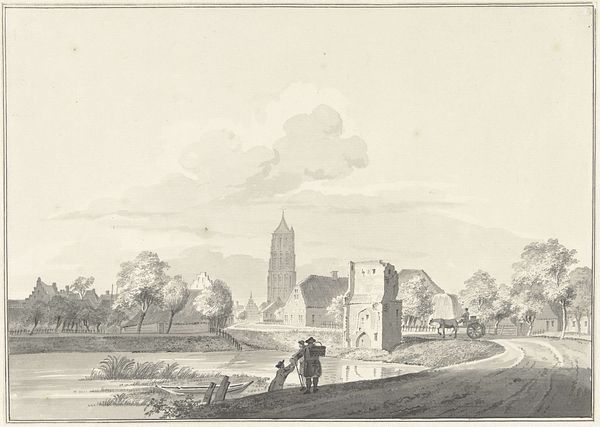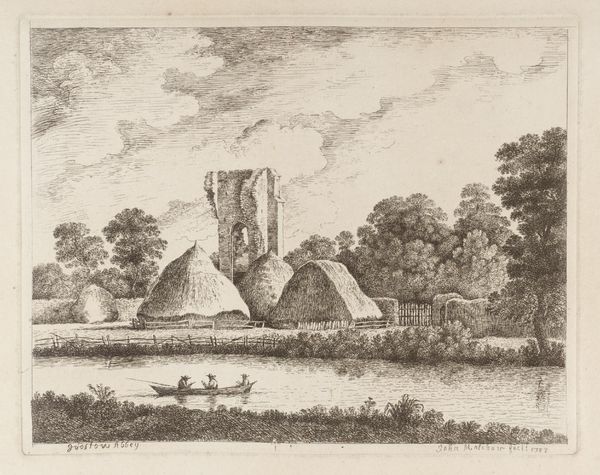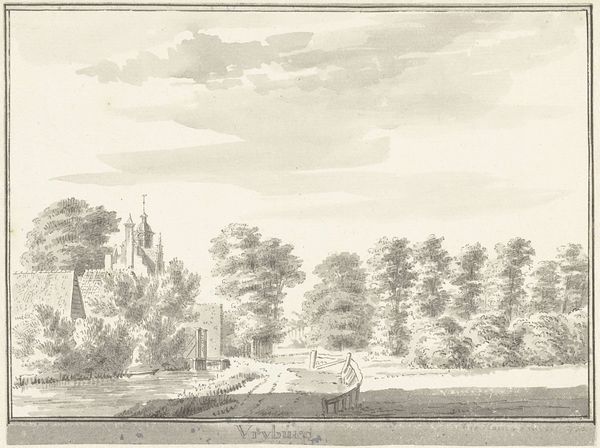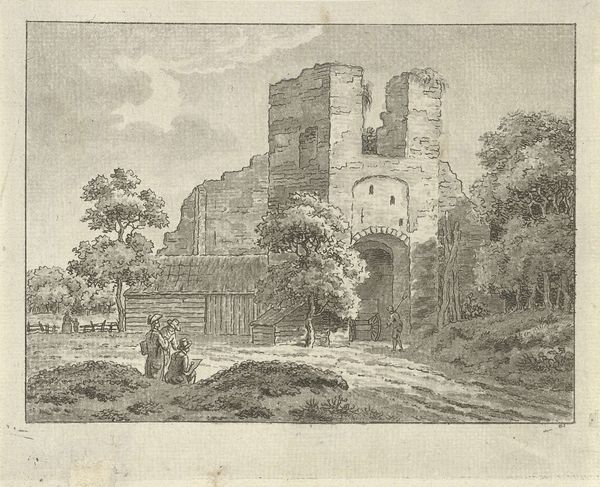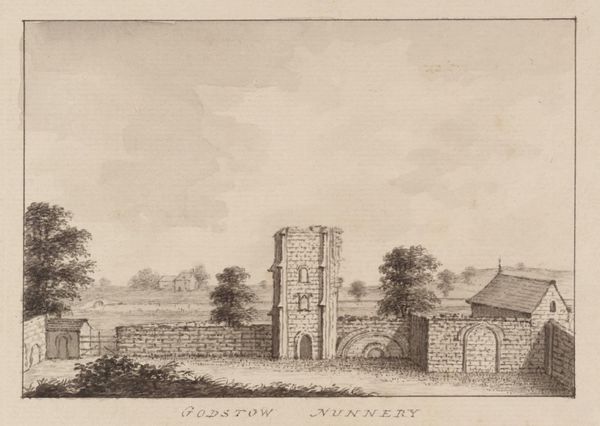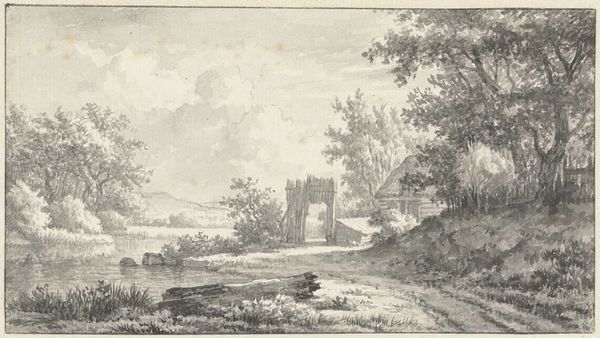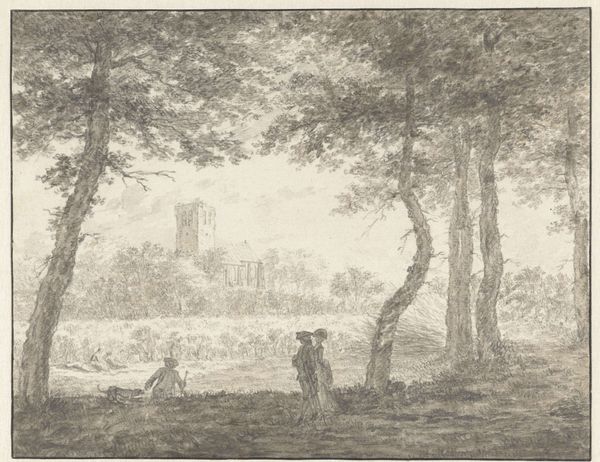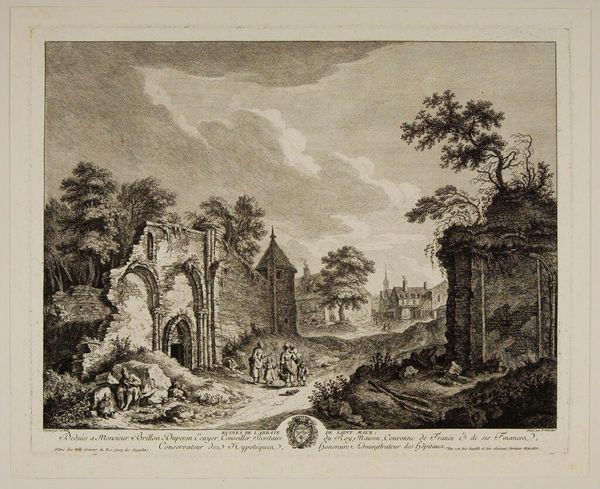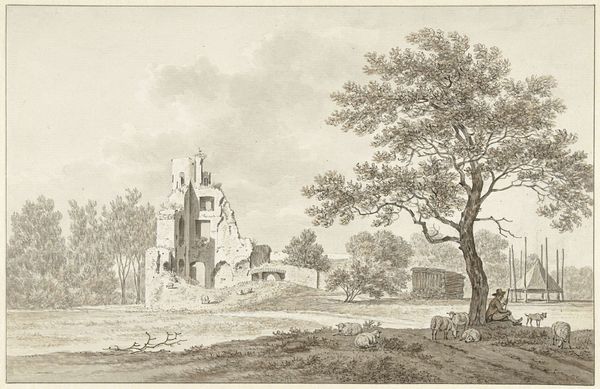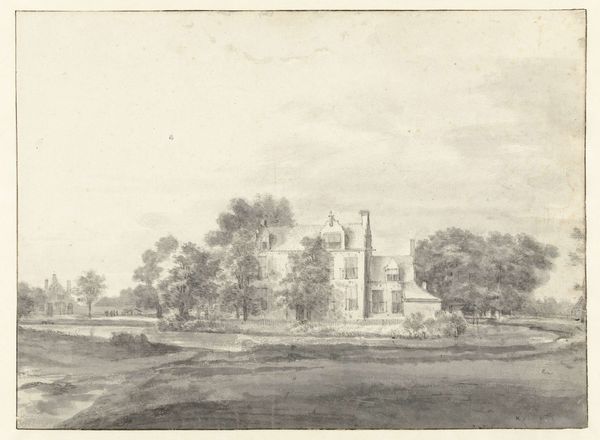
drawing, etching, paper, ink, engraving
#
landscape illustration sketch
#
drawing
#
quirky sketch
#
mechanical pen drawing
#
etching
#
pencil sketch
#
old engraving style
#
landscape
#
paper
#
personal sketchbook
#
ink
#
idea generation sketch
#
sketchwork
#
pen-ink sketch
#
storyboard and sketchbook work
#
engraving
#
rococo
Dimensions: height 73 mm, width 199 mm
Copyright: Rijks Museum: Open Domain
Editor: We're looking at Jan de Beijer's "The Ruin of Brederode," created between 1746 and 1748. It’s an ink and etching drawing on paper. The scene is quite serene, almost melancholic, with this imposing ruined structure dominating the landscape. What do you see as key visual elements within its composition? Curator: Initially, consider the careful articulation of line. De Beijer uses etching to create subtle tonal gradations, carefully modeling form and depth. The skeletal architecture is rendered in fine detail, evidencing the artist’s acute attention to linear structure. We observe how the linear structure interacts with the more softly rendered trees and the vast emptiness above. The ruined state becomes as much a visual element as the naturalistic portrayal. The contrasting balance between natural form and deliberate artificial form establishes interesting meaning when the artificial has broken down. Editor: The ruin does take center stage. Is the decaying nature symbolic? Curator: Thematically, yes. But let's examine that idea more carefully from a formal perspective. The vertical thrust of the ruined structure contrasts against the horizontal stretch of the landscape. How does that interplay contribute to the viewer's experience? Does it evoke an active response, perhaps stimulating our intellect with historical or allegorical reflections? Editor: It feels static in a way; somber almost. It emphasizes the weight of time, and it definitely feels intentional in the way the ruin mirrors the setting sun of that culture. Curator: Precisely. In de Beijer's work, we discern how formal relationships create profound emotive resonances. It makes me see the deliberate construction behind artistic design more intently. Editor: I appreciate you pointing out those opposing lines, between decay and progress. It adds depth to my understanding.
Comments
No comments
Be the first to comment and join the conversation on the ultimate creative platform.
